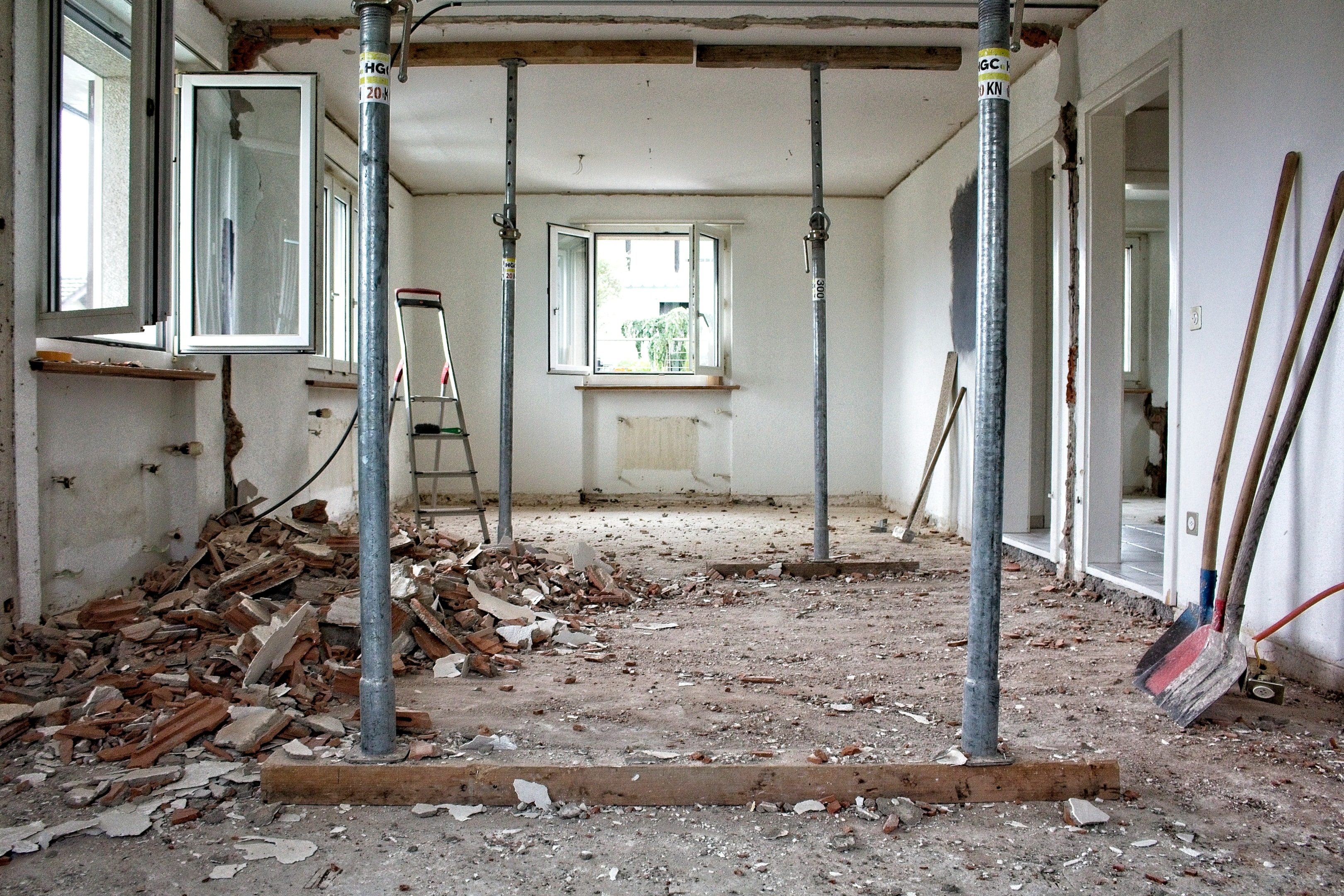How to Finance Your First House Flip: A Practical Guide for Investors
Introduction: What Is a House Flip and Why Financing Matters
House flipping is a popular real estate investment strategy involving buying a property, renovating it, and selling it for a profit. Behind every successful flip is a solid financing plan, as most house flippers don't have enough money in their own pocket to cover purchase price and renovation costs. That's where the right financing options come in. Whether considering hard money loans, private lenders, or traditional bank loans, securing funding can make or break your first real estate deal. Unlike traditional bank loans, many fix and flip projects require fast, flexible funding, so investors often turn to hard money lenders or private lenders who understand the unique needs of house flipping. Knowing which money lenders to approach—and how to structure your financing—can help you start real estate investing with confidence and set you up for a profitable flip.

Know What You're Financing
Before you even begin applying for loans or pitching private lenders, it's essential to understand what you're truly financing. Beyond the purchase price, you must account for additional expenses such as contractor fees, materials, labor costs, property taxes, and capital gains taxes to ensure your budget is realistic and comprehensive throughout the house flipping process.
Costs to Consider When Financing Your First House Flip
When planning how to finance your first house flip, it's crucial to understand that you're financing more than just the purchase price. A comprehensive budget should include several key cost categories:
Purchase Price: This includes the obvious purchase amount plus closing costs and title fees.
Rehab Costs: These cover materials, labor, permits, dumpsters, and repair costs. Always get multiple contractor bids and build in a 15–20% buffer for unexpected costs or "surprises."
Holding Costs: These often overlooked expenses include property taxes, utilities, insurance, loan interest, and HOA fees if applicable. Each month you hold the property reduces your profit margin.
Selling Costs: Plan for agent commissions, closing fees, staging costs, and potential buyer concessions, typically totaling 8–10% of the property's after repair value (ARV).
Accounting for all these expenses upfront helps ensure your financing plan is realistic and that you maintain profitability throughout your house flipping project. It is important to evaluate your budget before asking for financing, see Essential Strategies for Budgeting for Real Estate Investing Success to learn more.
Why Traditional Bank Loans Rarely Work for Flipping
Let's be blunt: banks hate flips. Traditional lenders like banks and government-backed agencies have strict criteria, require high credit scores, prefer move-in ready properties, and have slow approval processes, making it tough for real estate investors to secure timely funding for fix-and-flip projects. Because of these challenges, most house flippers turn to private money lenders or hard money lenders, who offer faster, more flexible loan options better suited to the risks and timelines of flipping houses.
Traditional bank loans rarely work for house flipping because they want move-in ready properties, take too long to close (30–60 days), and don't like short-term loans. However, if you have excellent credit and strong income, you might qualify for cheaper options like a HELOC on your residence, a cash-out refinance on another rental property, or a personal loan from a local credit union. While these can offer lower interest rates, they are not always easy to obtain for house flippers.
Hard Money Loans – The Fast Lane to Funding
What Is Hard Money?
Hard money loans are short-term loans from private lending companies that base approval mostly on the property's value rather than the borrower's income or credit score. They offer fast approval within 1 to 7 days, fund rehab costs, and require minimal paperwork. However, they come with high interest rates (8–15%), short loan terms (6–12 months), and upfront points (1–4% of the loan). Despite these drawbacks, hard money loans remain the preferred choice for first-time house flippers due to their deal-based approval process.
Private Money – Your Network Is Your Net Worth
Private money lenders are individuals—family, friends, other investors—who want to put their money to work outside of Wall Street. A private lender is an individual or group that is not a formal financial institution, offering more flexibility and faster funding than traditional banks. In some cases, private money arrangements can involve allowing investors to pool their resources as multiple investors in a single deal, making it easier to fund larger house flipping projects.
Why They Love Real Estate:
Secured by a hard asset (the property)
Better returns than a savings account or the stock market
Flexible terms that you negotiate directly
How to Pitch Them:
Create a simple deal summary (purchase price, rehab, ARV, timeline, projected profit)
Explain how you'll pay them back (interest or equity split)
Offer a promissory note + deed of trust for their protection
You'd be surprised how many people are sitting on idle capital—especially in self-directed IRAs.

Equity Partners – No Money Down, Split the Pie
Can't get a loan and don't want to pay interest? Bring in a money partner. Some small business owners use equity partnerships or small business loans to fund real estate flips, especially when traditional financing is unavailable.
5.1 How do equity partnerships work?
With an equity partnership, you bring in a partner who provides the cash for the deal, and you do the work. You split the profits according to your agreement. Clearly outlining potential profits is crucial when negotiating a partnership split, as it helps both parties understand the investment's viability and ensures a fair division of returns.
Seller Financing – Creative, Powerful, and Underused
Sometimes the seller becomes your lender. In these cases, the seller may offer to finance the purchase directly, allowing you to make payments over time instead of securing a traditional mortgage. Some sellers may review your credit history before agreeing to seller financing, as it helps them assess your financial reliability and trustworthiness. To learn the details about seller financing, see Seller Financing in Real Estate: The Smart Alternative to Traditional Loans.
Best Candidates:
Inherited properties: These homes are passed down through family members or relatives and often require quick sales due to estate settlements or heirs' preferences. They can offer unique opportunities for house flippers, as they may be acquired below market value, though they might come with legal or maintenance issues to address during flipping. To learn more about getting into this niche of real estate, see Finding Unclaimed Inherited Property: A Hidden Gem for Real Estate Investors.
Tired landlords: Owners overwhelmed by managing rental properties may sell their investments, often preferring fast, hassle-free transactions. This creates opportunities for house flippers to negotiate favorable terms and acquire properties needing renovation.
Long-time owners with no mortgage: Homeowners who have fully paid off their properties and owned them for years may want to downsize or relocate. These sellers often have equity and may accept creative financing or flexible sale terms, offering flippers well-maintained properties at reasonable prices, especially if motivated to sell quickly.
Key Benefits:
Little or no bank involvement
Flexible terms
Great for run-down properties banks won't touch
Just make sure you're working with a good title company and attorney to structure the deal properly.

FHA 203(k) Loan – Flip While You Live There
If you're willing to live in the property while renovating, the FHA 203(k) loan lets you borrow based on the after-repair value. It offers a low down payment (3.5%) and includes rehab funds, making it ideal for first-time buyers. However, you must live there for at least 12 months, navigate FHA inspections, and ensure the property meets FHA guidelines. It's a smart way to build sweat equity on your first flip.
Home Equity Line of Credit – Tapping Into Your Home's Value
A home equity line of credit (HELOC) is a flexible financing option for house flippers with equity in their primary residence, allowing them to borrow as needed to cover renovation costs and unexpected expenses at typically lower interest rates than other short-term loans. While it offers convenience and cost savings by charging interest only on the amount used, it's important to use a HELOC wisely since your home serves as collateral.
Crowdfunding and Online Real Estate Platforms
Sites like Groundfloor or Patch of Land allow you to raise capital by pooling resources from multiple investors through crowdfunding platforms, making it easier to fund your flip. While this method requires a strong pitch, deal structure, and meeting strict underwriting requirements, it can be a legitimate option if your numbers are solid, though it's generally less fast and flexible than private money.
Using Business Credit or Lines of Credit
You can also fund parts of your flip with revolving credit.
Example Uses:
Paying contractors
Covering permit fees
Buying materials at Home Depot
It's higher-risk and requires discipline. But it can work when you have smaller funding gaps and a short flip timeline.

Build Relationships with Local Lenders
Community Banks and Credit Unions
These smaller, local lenders may be more open to creative financing if you're local and can prove the deal is solid. Their local knowledge and relationship-based lending approach often means they can offer better terms than national banks. To leverage this advantage, show them your deal analysis and build rapport early—even before you find your first flip.
Qualifications for Fix and Flip Loans
Getting approved for fix and flip financing isn't just about finding the right property—it's about convincing lenders you're a safe bet. Hard money lenders, private lenders, and other financial institutions each have their own criteria, but most focus on a few key factors before offering loans for your house flipping project.
Credit Score & Financial History: While hard money loans prioritize the property, a decent credit score and clean financial history can secure better terms and lower rates.
Down Payment: Lenders typically require 10–20% of the purchase price or rehab costs from you to show your commitment.
Experience Level: Experienced flippers often get higher loan amounts and better terms. For your first deal, be ready with a detailed plan or a partner.
Property Analysis: A solid plan with realistic after repair value (ARV), renovation costs, and timeline increases your chances of funding.
Exit Strategy: Lenders want a clear plan to repay the loan, whether by selling or refinancing.
Understanding what lenders look for helps you position yourself as a prepared investor ready to tackle your first (or next) fix and flip project.
Know Your Numbers and Speak Their Language
To secure financing, you must clearly explain your total project budget, timeline, exit strategy (whether you plan to resell or refinance), worst-case scenario, and the maximum purchase price based on the property's after repair value (ARV) minus estimated repair costs to ensure profitability. Using simple pro formas or tools like the BiggerPockets Flip Calculator can help you effectively showcase these numbers to lenders and partners.

Conclusion: No Cash? No Problem—If You Have a Plan
Flipping your first house is like assembling a puzzle—you don't need all the pieces yourself, just to know how to put them together. Whether it's hard money, private lenders, seller financing, partnerships, or creative loan products, there's always a path forward. Working with real estate agents can provide valuable market insights, and using a home equity loan requires good credit and the ability to cover mortgage payments. Targeting an up-and-coming area can help maximize profits. Confidence and preparation are key—don't let fear of financing stop you; let it fuel your creativity. To learn more about the process of fix and flips, see How to Flip Houses Successfully: Essential Tips and Common Pitfalls.